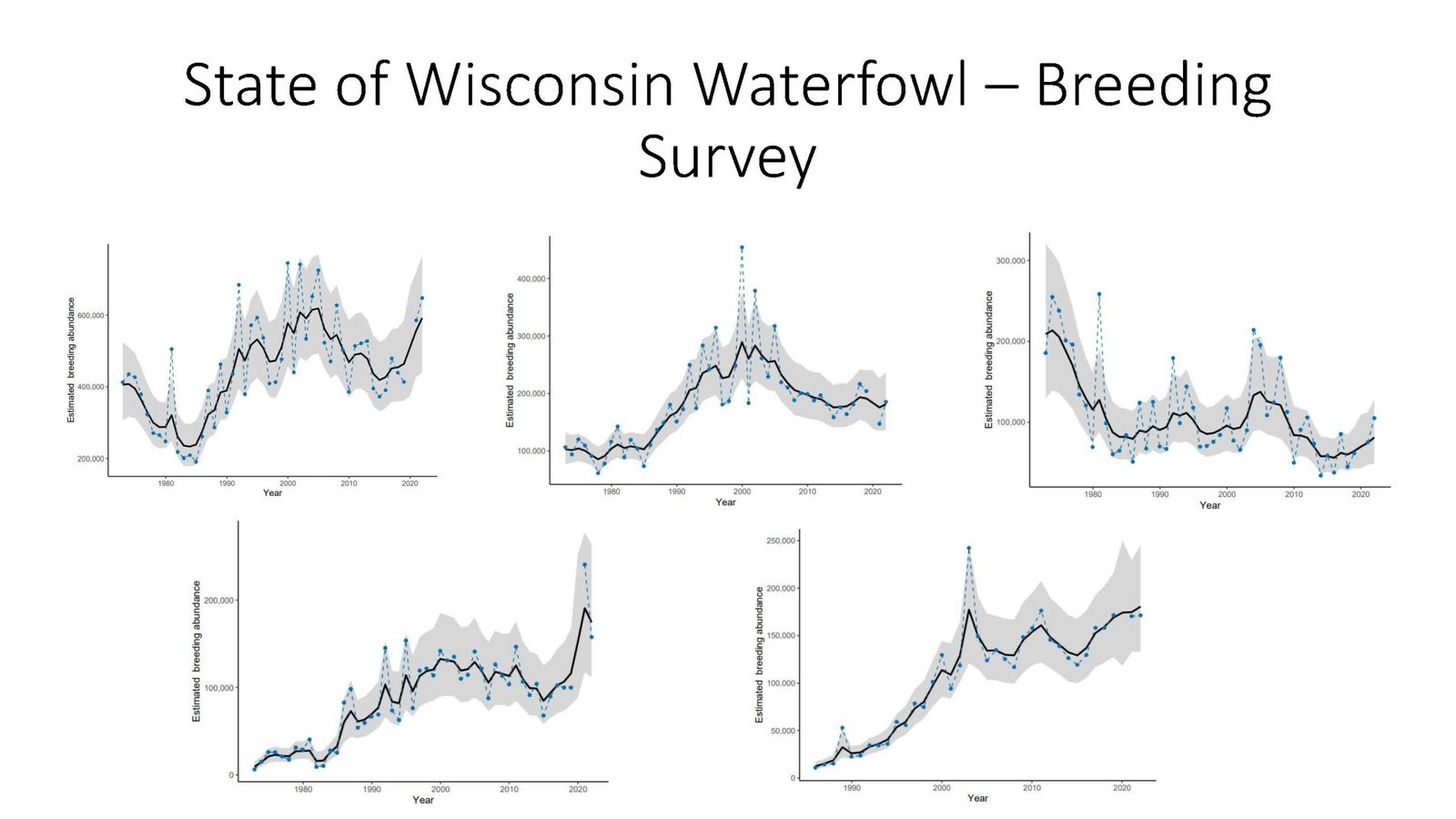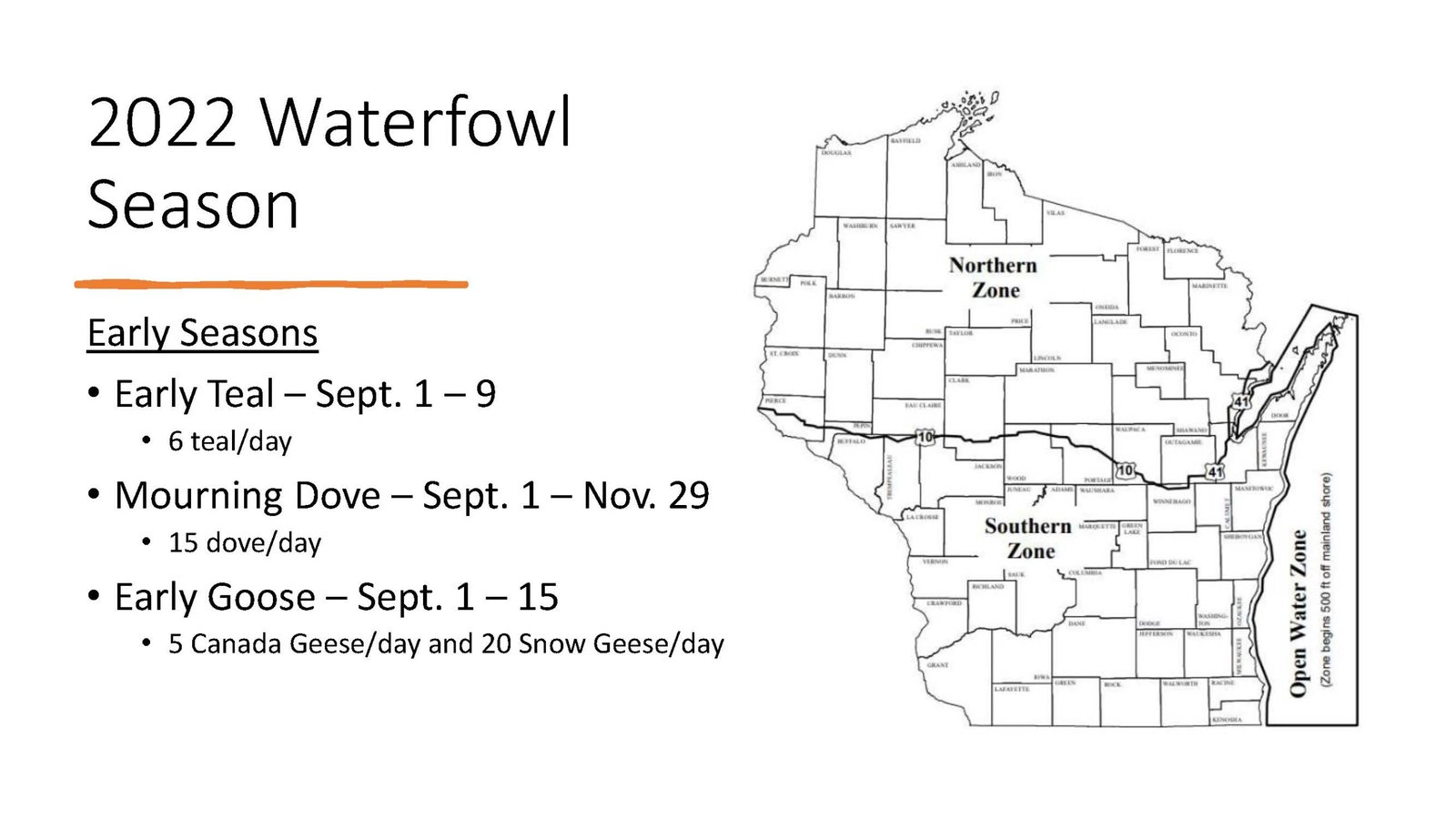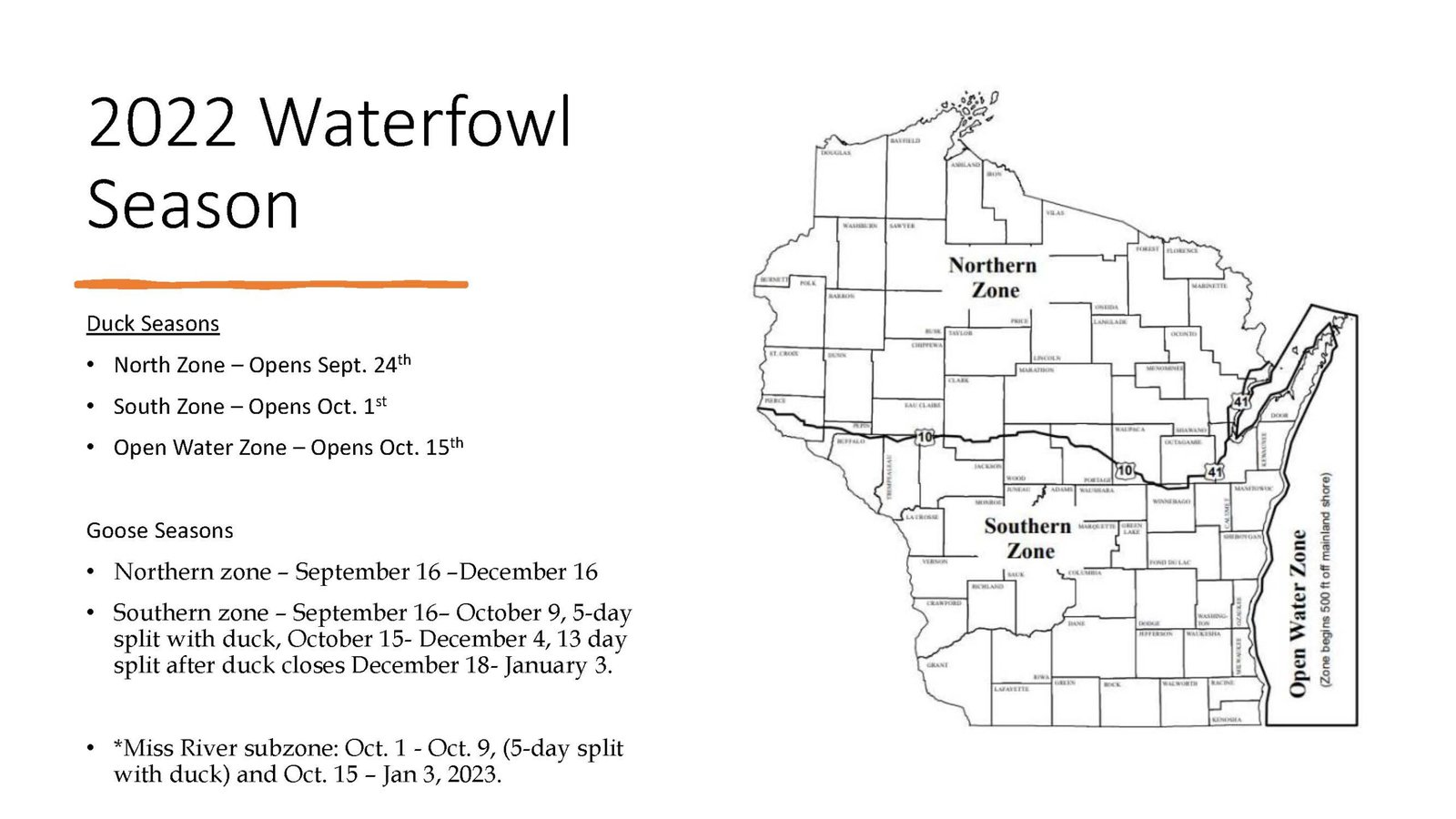By Bruce Ross, Executive Director bross@wisducks.org
This article originally appeared in Wisconsin Waterfowl Association’s September, 2022 Newsletter edition.
 Every year for the past several years the Migratory Bird Committee chair for the WI Wildlife Federation pulls together a meeting of all the state’s waterfowling “usual suspects” to share information with each other, and the invited media. Participants include the DNR, Delta, WWA, Conservation Congress, DU, as well as print and digital media. It’s a great opportunity to share the latest happenings…. And now you are getting it less than 24 hours after the meeting!
Every year for the past several years the Migratory Bird Committee chair for the WI Wildlife Federation pulls together a meeting of all the state’s waterfowling “usual suspects” to share information with each other, and the invited media. Participants include the DNR, Delta, WWA, Conservation Congress, DU, as well as print and digital media. It’s a great opportunity to share the latest happenings…. And now you are getting it less than 24 hours after the meeting!
First, here’s a presentation (download here or view, below) that Taylor Finger, state waterfowl biologist, made at the meeting (thanks for sharing it Taylor!). It’s great information for the curious waterfowler, much of it based on recent populations surveys, research and initiatives and some information reported at last week’s flyway meeting. But there is a lot…. Here are my key takeaways:
- You will likely see more ducks this season but some species are in trouble:
- Breeding populations of WI puddle duck species (mallards, wood duck, blue wing teal) are in pretty good shape compared to historical averages.
- Scaup are still challenged; Pintail and Canvasback are close to historic lows and future harvest planning for these species will be challenging.
- Canada Geese continue their growth to historic levels
- These populations were counted in the spring, but we had a good (wet) spring for breeding, so that’s promising for the number of ducks produced.
- Birds will likely be more concentrated this fall given the dry condition since spring.
- Mississippi river and Green Bay are expected to see good numbers of birds.
- Geese populations are up locally and in the more migratory population now in Ontario field hunting may be slightly delayed to harvest delays, but hunting conditions should be good thereafter.
- The US Fish and Wildlife Service national waterfowl population counts (the first since 2019 due to COVID) show that nationally, total ducks are down, but pond counts up. Still, expect a liberal (i.e., 6 bird) season next year in 2023 since pond counts are up.
- Mourning Dove populations are approaching historic lows (about 40 million), but not because of hunting. Hunting barely scratches the surface of that population – it seems to be following historic cycling between highs and lows that are not currently explainable by existing research.
- Waterfowl zones (i.e., North, South, Open Water) will remain essentially the same as last year EXCEPT the DNR learned some lessons with last season’s introduction of the Open Water zone and made some tweaks:
- Green Bay’s typical peninsulas (e.g. Long Tail, Little Tail, others) may have become islands with the historic high water, which last year would have made these traditional South Zone locations suddenly in the Open Water Zone, leading to hunter confusion. This year, those locations are back in the South Zone.
- Distance from shore for all inland “Open Water Lakes” has been reduced to 500 feet, to be consistent with the Lake Michigan Open Water Zone, in order to reduce confusion.
 Taylor will be producing a status report of the important Waterfowl Management Plan soon – there’s been good progress – and we will provide that pronto!
Taylor will be producing a status report of the important Waterfowl Management Plan soon – there’s been good progress – and we will provide that pronto!- Waterfowl Research at the State includes:
- Where are Wisconsin’s harvested birds coming from? Bird wing feathers have specific isotopes (hmm?) that help determine where they grew up. You can play a role by sharing your bird wings per the guidance in the presentation.
- Radio transmitters on Wisconsin mallards will help researchers better understand their local and regional migratory patterns. Ditto with trumpeter swans.
- Validating the latest guidance for high-priority wetland: those guidelines tell restoration professionals where to spend money to improve wetlands, but are they valid? This research will help determine if they need to be adjusted.
- Sorry… but you are paying $5 more for your state duck stamp. But the good news is this results in over $200,000 more habitat money for the ducks! So far, these additional stamp funds have allowed an additional 10 projects throughout the state. More to follow.
You should really take a look at the presentation. Do you have questions? info@wisducks.org and we will forward them to Taylor.
























